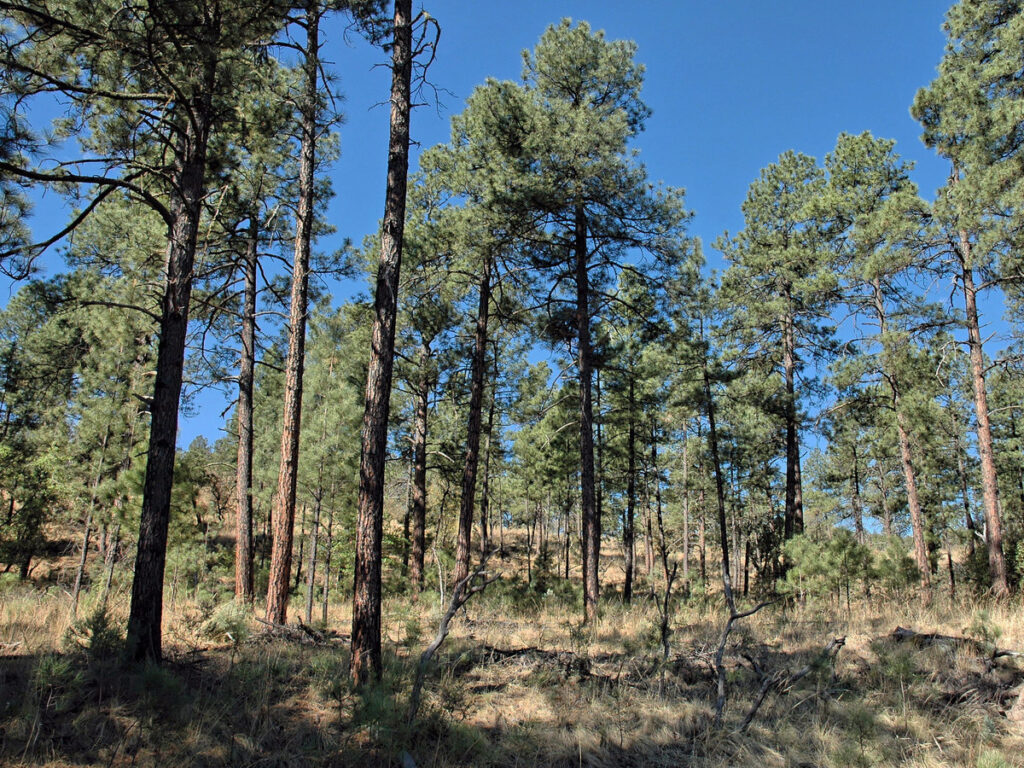The Davis Mountains of West Texas contain some of the largest populations of Rocky Mountain Ponderosa pine, Pinus ponderosa var. scopulorum, in Texas. The Davis Mountains Preserve, founded by The Nature Conservancy (TNC), in Fort Davis contains a majority of the trees found in one area.
They can also be found in the Guadalupe Mountains and Big Bend’s Chisos Mountains.
Unfortunately, the combination of drought, secondary bark beetle invasion, and wildfires have taken its toll on ponderosa forests. Up to 75% of the Ponderosas in the 33,000-acre Davis Mountains Preserve have been lost over the three or four decades, and it’s predicted that loss will continue if nothing is done. We have partnered with TNC to begin restoration efforts in the Davis Mountains Preserve.
Restoration efforts
In 2014, our foresters carefully assessed 18 stands in the region and recommended to:
- collect native seed for growing seedlings for reforestation efforts;
- thin overly dense stands of existing Ponderosa pine to increase tree vigor;
- remove competing vegetation to reduce drought, insect, and wildfire threats; and
- collect baseline data to be used to monitor the recovery of forest stands.
Between 2015 and 2024, we received two grants from USDA totaling $400,000 to support initial forest health assessments, management prescriptions, thinning activities to increase the health and vigor of existing trees, and initial planting trials in the Davis Mountains. Stands were marked and baseline data gathered in preparation for the thinning of around 400 acres.
Over 2,500 seedlings have since been planted as part of two different reforestation experiments. Data shows that seedling survival rate is less than 25%, with herbivory (animals feeding on living plants) being the main issue.
In this area, gophers are the main issue as they eat the root systems of new, tender seedlings. We are continuing to gather cones so that we can grow ponderosa pine seedling in nurseries and then transplant them in the field as a reforestation effort. We are also assessing which intermediate stand treatments should be used in the field to further enhance existing ponderosa pine stands.
Information from this project will be used to create best management practices and educational resources.
